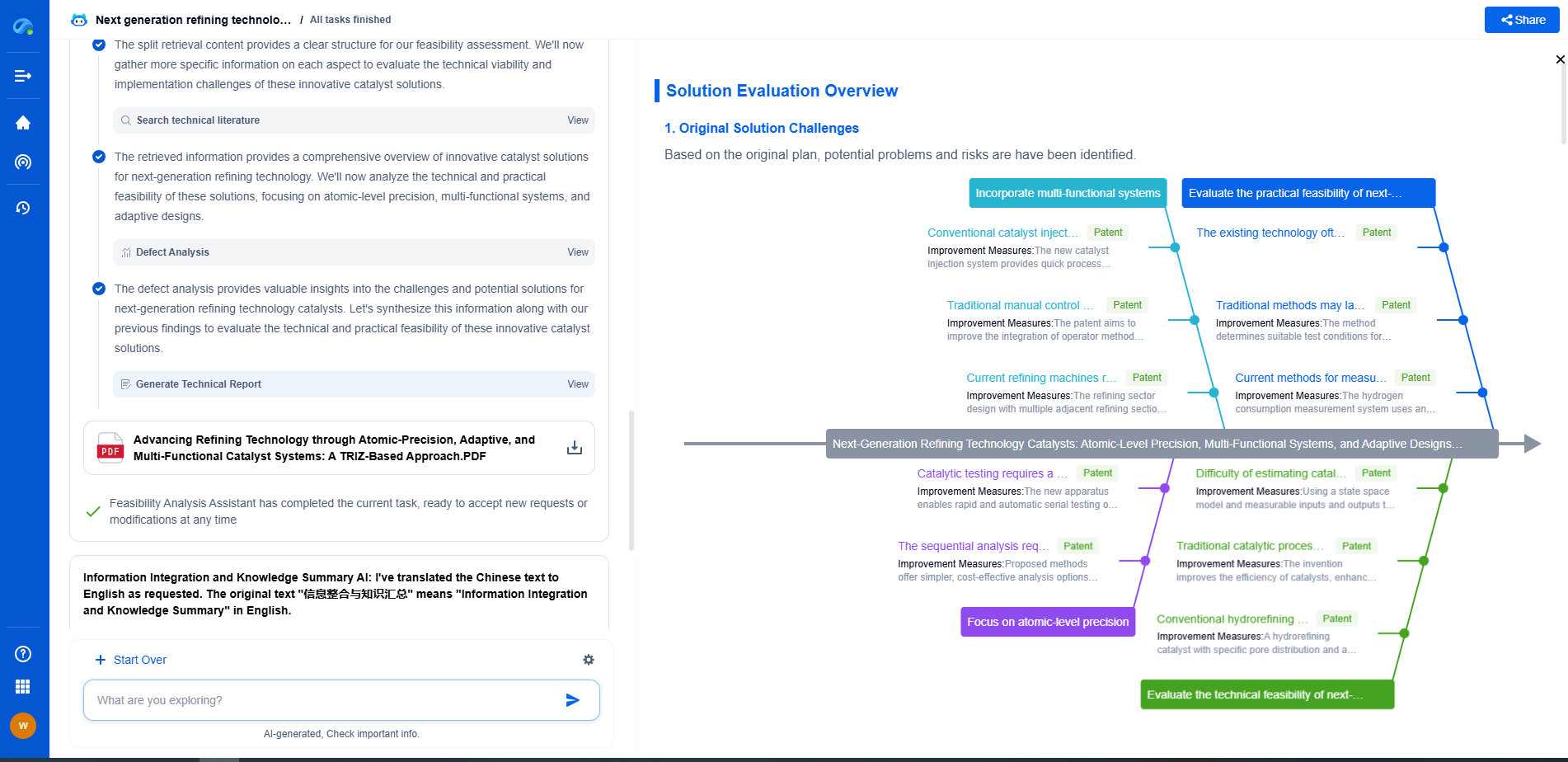What is a Feature Map in Convolutional Neural Networks?
JUN 26, 2025 |
In the domain of deep learning, particularly when dealing with image data, convolutional neural networks (CNNs) are the go-to architecture. A fundamental concept within CNNs is the feature map, an element that plays a pivotal role in processing and interpreting visual data. Understanding feature maps is crucial for anyone looking to grasp how CNNs function and why they are effective in computer vision tasks.
What is a Feature Map?
A feature map is essentially the output of a convolutional layer within a CNN. When an input image passes through a convolutional layer, multiple filters or kernels slide over the image, performing convolution operations. Each filter is designed to detect specific features such as edges, textures, or patterns. As the filters scan through the image, they generate a set of outputs that collectively form the feature map. These feature maps are crucial as they encapsulate the presence and strength of various features detected by the filters at particular spatial locations.
The Role of Activation Functions
After the convolution operation, an activation function is typically applied to the feature maps. Common activation functions like ReLU (Rectified Linear Unit) introduce non-linearity into the model, enabling it to learn more complex patterns. The activation function adjusts the feature map by setting negative values to zero (in the case of ReLU), which helps in highlighting the features that contribute most significantly to the prediction task.
Stacking and Layering of Feature Maps
In a CNN, feature maps are not solitary entities; they exist in layers and are often stacked upon one another. A single convolutional layer can produce multiple feature maps, each corresponding to a different filter. As the network deepens, these maps become more abstract, capturing higher-level features. Early layers might detect simple edges or color blobs, while deeper layers capture more complex structures like shapes and even objects.
Pooling and Reducing Dimensionality
To manage the computational load and focus on the most significant features, pooling operations are applied to feature maps. Pooling, such as max pooling or average pooling, reduces the dimensionality of feature maps while maintaining their essential characteristics. By downsampling, CNNs can efficiently handle large images and focus on dominant features. This step is vital for building robust models that generalize well to unseen data.
Visualizing Feature Maps
Visualizing feature maps can offer profound insights into what a CNN is learning. By observing the transformed images at each layer, one can understand which aspects of the input data are being emphasized. These visualizations can be particularly enlightening when fine-tuning models or diagnosing issues, as they reveal the inner workings of the network and highlight areas where the model might be focusing incorrectly.
Implications of Feature Maps in Real-world Applications
Feature maps are not just theoretical constructs; they have practical implications in diverse applications. In image recognition tasks, feature maps allow CNNs to differentiate between objects in a scene. In medical imaging, they help in identifying abnormalities in scans. Furthermore, in fields like autonomous driving, feature maps contribute to the accurate detection of pedestrians, vehicles, and road signs.
Conclusion
Feature maps are a cornerstone of convolutional neural networks, enabling them to process and interpret complex visual data effectively. By capturing and emphasizing critical features, they allow CNNs to excel in various image-related tasks. Understanding feature maps provides deeper insight into the capabilities and workings of CNNs, making them an essential focus for anyone interested in the field of deep learning and computer vision.
Unleash the Full Potential of AI Innovation with Patsnap Eureka
The frontier of machine learning evolves faster than ever—from foundation models and neuromorphic computing to edge AI and self-supervised learning. Whether you're exploring novel architectures, optimizing inference at scale, or tracking patent landscapes in generative AI, staying ahead demands more than human bandwidth.
Patsnap Eureka, our intelligent AI assistant built for R&D professionals in high-tech sectors, empowers you with real-time expert-level analysis, technology roadmap exploration, and strategic mapping of core patents—all within a seamless, user-friendly interface.
👉 Try Patsnap Eureka today to accelerate your journey from ML ideas to IP assets—request a personalized demo or activate your trial now.
- R&D
- Intellectual Property
- Life Sciences
- Materials
- Tech Scout
- Unparalleled Data Quality
- Higher Quality Content
- 60% Fewer Hallucinations
Browse by: Latest US Patents, China's latest patents, Technical Efficacy Thesaurus, Application Domain, Technology Topic, Popular Technical Reports.
© 2025 PatSnap. All rights reserved.Legal|Privacy policy|Modern Slavery Act Transparency Statement|Sitemap|About US| Contact US: help@patsnap.com

